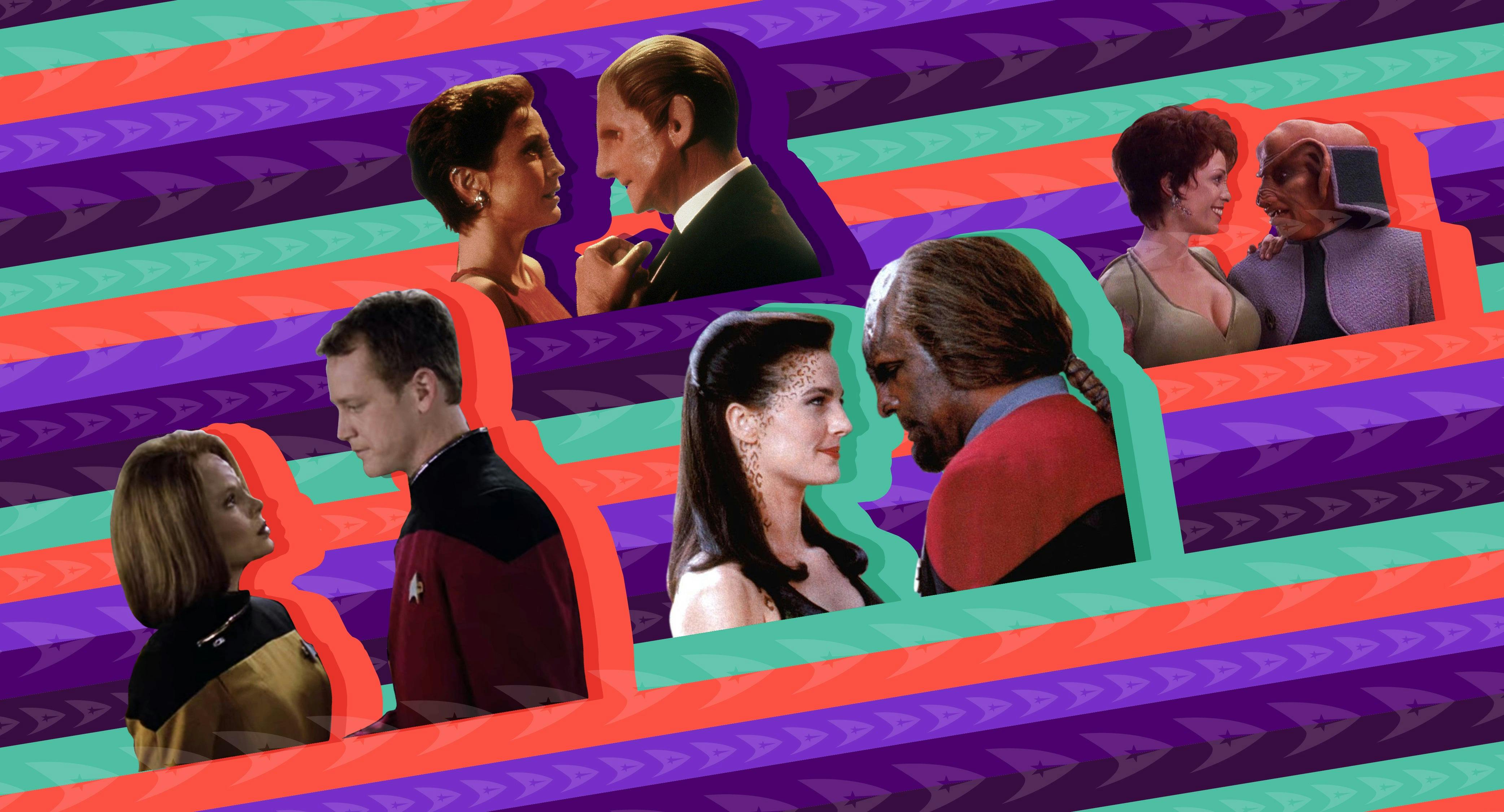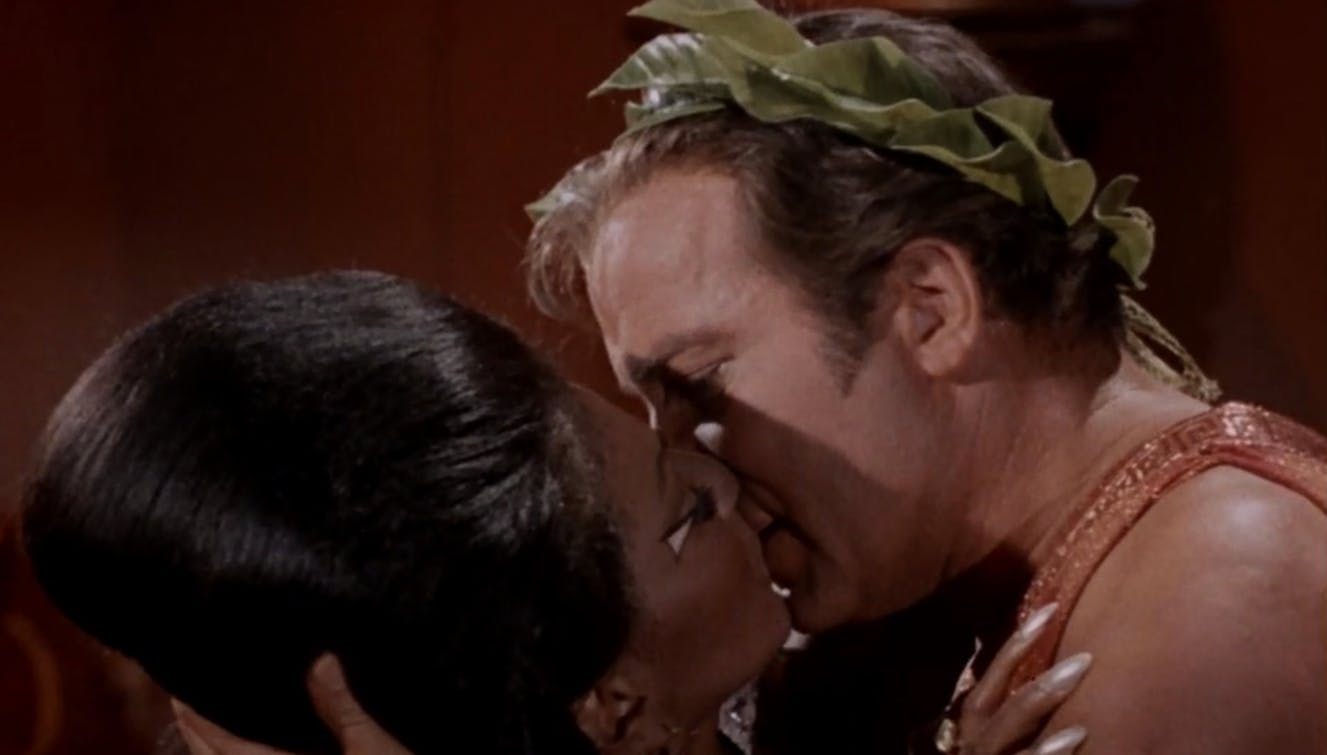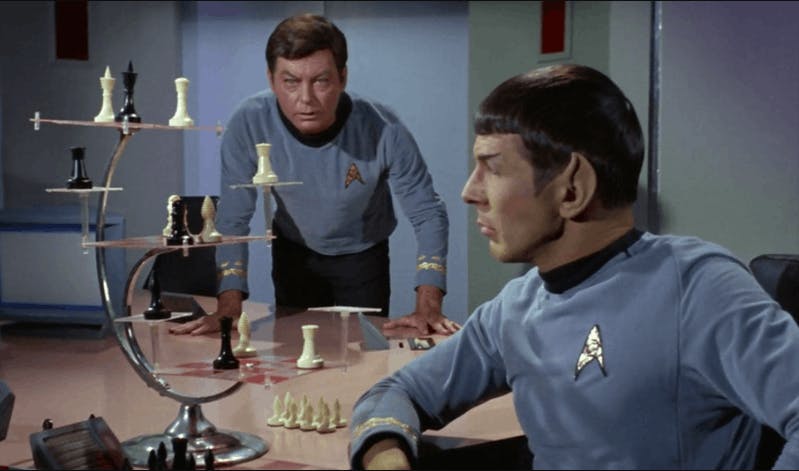Published Jun 11, 2021
The Persistent Power of Loving Day
Interspecies relationships on Star Trek and their real world parallels

StarTrek.com
On June 12th 1967, the United States Supreme Court passed a monumental decision which struck down all anti-miscegenation laws in America, making interracial marriage federally legal. The victory of the couple in the case, Richard and Mildred Loving, upheld the sanctity of their marital vows as well as the marriages of similar ‘loving’ couples across the country.
A year later on November 22, 1968, the original Star Trek series aired the episode “Plato’s Stepchildren” featuring one of the first interracial kiss scenes on television between Captain Kirk and Lieutenant Uhura. Since then, each successive version of the show has tried to be more inclusive and nuanced than the last. Its increasingly progressive depictions of women, people of color, and sentient beings is a template that the franchise has been faithful to since its inception. At the same time, it did not naively ignore the very real prejudices of society, but instead repackaged and presented them to us in an unfamiliar form.

StarTrek.com
Beginning with The Original Series, the ship’s crew represented a large diversity of cultures and races, including aliens. Prominent crewmembers in addition to Uhura, were Russian navigator Pavel Chekov, Japanese helmsman Hikaru Sulu, and a mixed species Vulcan/human first officer Mr. Spock.
Chekov’s inclusion was a significant statement at the time, given the mounting tension of the Cold War, and Sulu’s presence less than a generation after World War II was also daring. Notably, George Takei who portrayed Sulu, had been held in an internment camp as a young boy. As for Spock, his mixed alien background allowed the series to continually explore themes of partnership and cooperation between cultures while also presenting an inclusive future for humanity.
Having an extraterrestrial main character was part of the show’s forward-thinking vision for mankind. Rather than dismissing issues of deep racial divides in this future utopian existence, it used interspecies relationships as a metaphor for these conflicts. In fact, the bigotry among species both human and non-human have always been front and center.

StarTrek.com
For example, during TOS, Dr. McCoy frequently berates and denigrates Spock for his Vulcan ancestry. He has called him a “pointed eared hobgoblin!” ("Bread and Circuses"), criticizes his people’s emotional distancing saying he’s “the most cold-blooded man I've ever known." ("Court Martial"), and in the movie Star Trek III: The Search for Spock refers to him as a “green-blooded son of a bitch.”
Other species also suffer similar indignities throughout the series. In several instances during DS9, Miles O’Brien uses the derogatory term "Cardies" when referring to Cardassians. Henry Kim states in the Voyager series premiere that he was “warned about the Ferengi at the Academy” ("Caretaker: Part I") and on TNG, Dr. Crusher remarks that a Ferengi scientist was “practically jeered off the stage” ("Suspicions"). Among other species; the Vulcan Captain Solock believes that non-Vulcans are inferior and "emotionally handicapped" ("Take Me Out to the Holosuite"), Romulans and Klingons regard each other as "blood enemies" ("Reunion"), and Bajorans are heavily prejudiced against Cardassians after the decades-long occupation of their homeworld.
The same way racial profiling, makes broad judgements about an entire race of people, the species in Star Trek are also assumed to be a monolith. Every Vulcan is smart, every Romulan is duplicitous, all Ferengi are greedy cowards, and every single Klingon is a violent drunk. Instead of portraying a future where there is no bigotry, we are shown one where that bigotry has taken a new shape. In this way it continues to be a reflection of our own society and the struggles we face.

StarTrek.com
Due to these prejudices, those who have parents from two different species do not face an easy road ahead. Mixed backgrounds individuals are often bullied, ostracized, and have a difficult time forming relationships. They also face a psychological struggle between their cultures. Spock articulates this inner conflict when he states in the original series, “I have a Human half, you see, as well as an alien half, submerged, constantly at war with each other” ("The Enemy Within").
In Star Trek: Enterprise the first known alien hybrid baby of the human Trip and the Vulcan T’pol is deemed "a cross-breed freak" and used as an example of the perils of interspecies mating (Terra Prime). In Voyager, the half-Klingon and half-human B’Elanna is so distressed by her past that she tries to genetically alter her unborn daughter to not resemble Klingons ("Lineage"). On TNG, K’Ehlyr — who is also Klingon and human — states how she is terrified by her Klingon side ("The Emissary"), and in DS9 the half-Bajoran and half-Cardassian Ziyal explains that her background makes her “an outcast” ("For the Cause").
It is because these obstacles exist that interspecies relationships are a testament to the power of love and friendship. The fact that they endure despite the deep divides between alien races is a clear social commentary about our fundamental similarities, despite any differences on the surface. Relationships like the Lovings, that stand defiantly in the face of societal contempt, exemplify the endurance of love against hate. They are the literal embodiment of how we are better together. The benefits of overcoming prejudice is not just about social progress, but the key to the evolution of our species, and perhaps one day, alien species as well.
Zoe Malik (she/her) is a lifelong Star Trek fan and writer based in New York. She is currently the News Producer at Full Frontal with Samantha Bee and occasional producer/writer for YouTube channels including TheTryGuys. Before pursuing her passion for writing she was the Science Researcher Coordinator at NYU Langone Medical Center.

